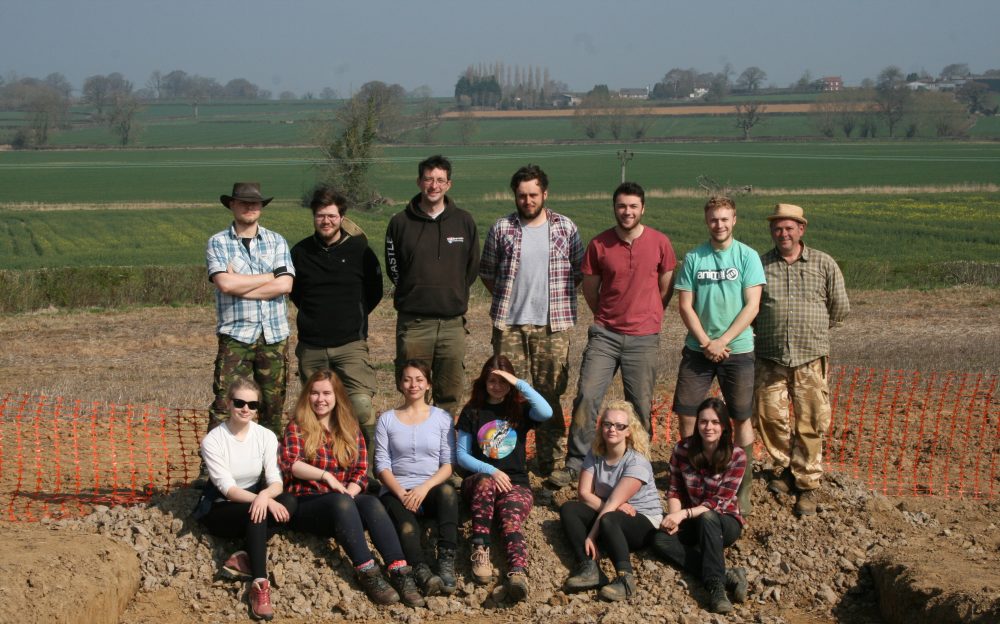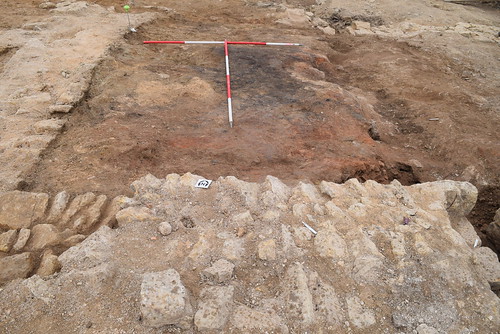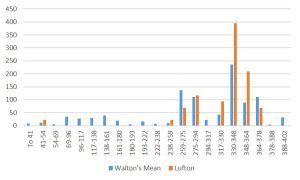James is writing this from the comfort of his home on a rather damp bank holiday Sunday.
The hard work of the excavation ended on Friday when James and Elliot watched the machine backfill the trench and reseeded the area. With the students ferried back to the train station the supervisors and directors retired to the Masons Arms for a fine evening meal. On Saturday they left Somerset early and heading up the motorway at light speed (also known as 62mph) we made it back to Newcastle (dropping Hayley at Wetherby Services on the way) in record time.
A hideous couple of hours followed and James, Andy and Elliot struggled to get all the finds and equipment properly stored at the University. By 7pm we were all home, back amidst our respective families and coming to grips with such innovations as walls and meals that involve rice.
***************************************
It’s been our most successful season. We’ve achieved more than we imagined we could and revolutionized our understanding of the Lufton Roman villa. The long process of post-excavation analysis follows, so make sure you stay tuned to the blog for updates.
We’d like to thank the excavation team for all their hardwork in sometimes difficult and trying conditions. We’d also like to thank the local community for their interest, patience and generosity.
Particular thanks go to: Maggie and Colin Baker (our hosts), James and Carol Pullen (landowners), Liz Glaisher and Peter Seib (Brympton), Ski, SSARG, Historic England, YALHS, Roman Research Trust and the Somerset Archaeological Society. Ian Hodder, our digger driver from G. Crook, made the work possible, as did YHC and Wessex Water. We have undoubtedly missed someone off this list. If it’s you, then please accept our thanks and know that the omission is through forgetfulness rather than carelessness.
We do hope to return next year. Such a return largely depends on whether significant funding can be raised. Excavation is an expensive business and to run another season will cost somewhere in the region of £35K. If you, or your business / organisation are interested in supporting the project next year then please contact James G.
To end with a score card of the excavations:
Extra building phases found: 3
Roman coins discovered by metal detector: 45
Roman coins discovered by eye: 5
Tessellated pavements found: 1
Roman hairpins: 1
Complete pots: 1
Visitors to site: 500+
TV appearances: 2
National Newspaper articles: 3
Rubbers / pencil erasers lost: 60
Custard creams consumed by Andy: 134,567
Trips to Asda: 34500
Meals ruined by Jeff: 1
Dig trousers worn by James G: 1
Trowels lost: 3
Pairs of steel toecapped boots ruined: 3
Times the hire company emptied the Portaloo: 2


















